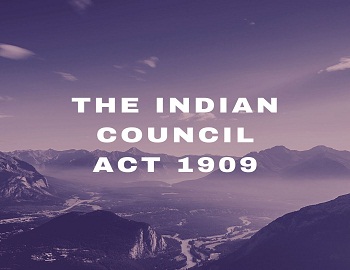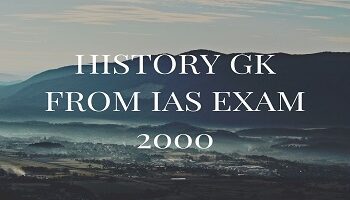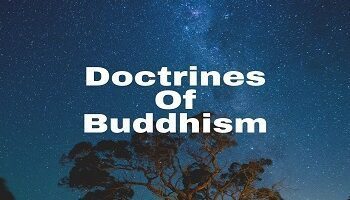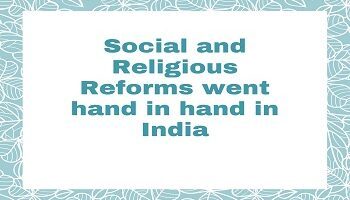The Indian Council Act 1909:
The background of the act of 1909 was prepared by the rise of the extremist movement in India. When we observe minutely we find that the rise of the extremist movement meant the end of an era of constitutional politics and the beginning of the new politics of boycott and political confrontation. This phenomenon threatened the British. So the British colonial government adopted a two-pronged strategy- to strengthen the position of moderate leaders vis-a-vis the extremists and to pull out the Muslims from the national movement. The main features of this Act were:
- Separate Electorates: The reforms envisaged a separate electorate for Muslims besides other constitutional measures. The government thereby sought to create a rift within the Congress on the one hand by winning the support of the moderates, and on the other, to win the favor of Muslims against Hindus. To achieve the latter objective, the reforms introduced the system of ‘separate electorates’ under which Muslims could only vote for Muslim candidates. This was done to encourage the notion that the political, economic, and cultural interests of Hindus and Muslims were separate and not common. It sowed the seeds of communalism and checked the historical process of the unification of India. It also distracted Indians from focusing on economic and political problems. Indian political leaders were however dissatisfied by these reforms. Lord Minto came to be called as ‘Father of Communal Electorate’.
- It increased the membership of non-officials in the Imperial and Provincial Legislative Councils.
- The effective principle introduced by the Indian Councils Act, 1892, was further extended, so that in 1910 more than a hundred indirectly elected Indians took their seats in the Councils.
- In the Provincial Legislature, the non-official members had the majority, but an official majority was retained at the Centre.
- The Act provided for the appointment of an Indian to the Viceroy’s Executive Council, as well as the Provincial Executive Councils. Satyendra Prasad Sinha (SP Sinha) became the first Indian to join Viceroy’s Executive Council as a law member.
- The element of Self Rule was not introduced – It made provisions for Indirect Elections
Positive aspects were:
- Voting on some part of the budget was allowed.
- More power was given regarding the asking of questions.
- More representation was given.
Still, the reformed council didn’t enjoy any power. In fact, the purpose of reforms was to confuse moderate nationalists and check the growth of unity among nationalists.
The critics pointed out that Reforms of 1909 gave the people the shadow rather than the substance. “They granted influence and not power” and according to George Washington, “influence is not government.” No wonder, Mazumdar described the reforms as “mere moon-shine.”









Comments (No)